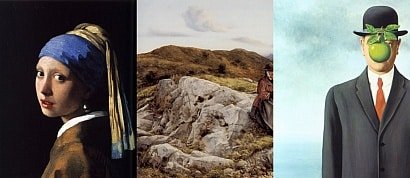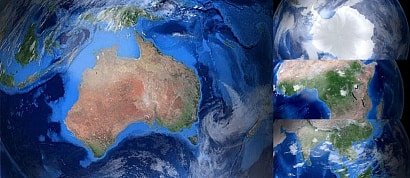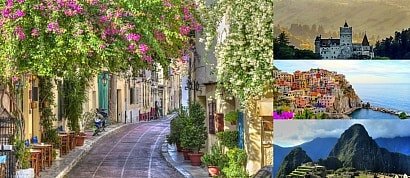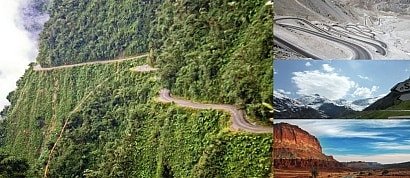Places
 Add image to section
Add image to section
Europe
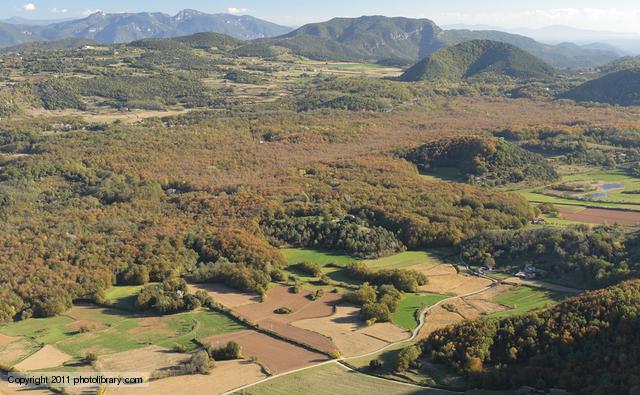
Europe is defined as a separate continent in political terms, but biogeographically it's part of Eurasia. Europe has few natural wilderness areas as most of its habitats have been created or influenced by mankind over millennia. Left alone, most of Europe would revert to forest, as it was after the end of the last ice age. Even today, some 25% of the land is forested, if you include managed woodlands. Europe's original fauna and flora were therefore mostly forest dependant or tolerant species, such as bears, boar and badgers. As agriculture opened up the landscape, opportunities arose for other species.
 Add image to section
Add image to section
Mediterranean

Low rainfall and hot summers make the Mediterranean biome a hard place for animals and plants to thrive. Mediterranean plants are often adapted to conserve water and survive summer drought. Many African animals would probably suit the Med's hot, dry summers - porcupines and fruit bats have crossed over - but are less able to cope with the cooler, wet winters. The original Mediterranean Sea dried up in the Miocene Epoch and stayed that way until a little over 5 million years ago when water poured in from the Atlantic. It lacks nutrients and is saltier than the Atlantic, but it's still a biodiversity hotspot with many unique species.
 Add image to section
Add image to section
Wales

Wales is a country full of natural beauty. Much of its landscape is mountainous, from Snowdonia to the northwest, home to the rare and iconic relic of the ice-age the Snowdon lily, to the Brecon Beacons in the south. Bordered by the Atlantic Ocean and Irish Sea to the west, there are 1200km of rugged coastline and over 50 islands with significant colonies of seabirds such as gannets, puffins, kittiwakes, shags and razorbills.
The islands of Skokholm and Skomer are home to more than half the world's population of Manx shearwaters. The impressive array of Welsh habitats continues with valleys, heathland, woodland and farmland, all full of wildlife. Welsh gems to watch out for include dolphins, porpoise and whales out at sea, distinctive red kites and that charismatic crow of wind-swept coastal areas, the chough.
 Add image to section
Add image to section
Ynys-hir nature reserve

The RSPB’s 700-hectare Ynys-hir nature reserve encompasses a variety of habitats ranging from impressive oak woodlands, heathland and wet grassland to challenging saltmarshes, redbeds and freshwater. Situated on the Dyfi estuary near Machynlleth in Powys, it is a haven for breeding wildfowl and wading birds, notably redshanks and lapwings. Wintering ducks and geese feed in large numbers on the saltmarshes and among the birds of prey that are present all year are peregrines, goshawks and iconic red kites. The reserve’s heronry boasts nesting grey herons and little egrets. Otters, polecats, hazel dormice, grass snakes, 19 species of dragonfly, 26 species of butterfly and more than 400 species of moths also call Ynys-hir home. Ynys-hir translates as ‘long island’ in English.
 Add image to section
Add image to section
Africa

Africa straddles the equator which bestows a rich diversity of wildlife and landscapes on the world's second largest continent. Large predators roam the sweeping savannas among huge herds of grazing herbivores, while apes, monkeys and snakes inhabit its dark, dense forests. Widely regarded as the place where human life originated, Africa is home to many of the world's best loved and most fascinating animals, as well as to some of its most endangered. Yet it's also home to many species that are as familiar to us in the UK as they are to Africans.
 Add image to section
Add image to section
Madagascar

Around 80% of Madagascar's wildlife is found nowhere else as a result of the island's strange geological history. Once part of the Gondwana supercontinent, Madagascar lost contact with Africa (160 million years ago), then with Antarctica, Australia and finally India. Many of its endemic species, such as the elephant bird, stuck with the island for the entire journey and gradually evolved into forms that differed from their cousins on other continents. But while Australia and India drifted far from Africa, Madagascar remained close - only 400km of sea separates them today. Animals and seeds swept out to sea from Tanzania's and Mozambique's rivers could conceivably make it across to the island as happened with the ancestors of Madagascar's lemurs around 54 million years ago, and its baobab trees 20Ma.
 Add image to section
Add image to section
North America

During its history, North America has been in contact with South America and Eurasia, and been colonised by animals and plants from both landmasses. Some of these have gone on to evolve into new species in their new home. North America also had native creatures that evolved in situ and spread across the world later, such as the horse family and reindeer. Those mountain ranges that run north to south, such as the Rockies and the Sierra Nevada, influence the continent's climate and create barriers to the movement of animals which makes for distinct ecological regions on either side.
 Add image to section
Add image to section
South America

Home to marsupials, monkeys and the world's largest rainforest, South America is the continent with everything - from glaciers to deserts. It became a continent in its own right on breaking away from Africa and Antarctica 120 million years ago. Its fauna and flora are therefore descended from organisms either on the continent then (marsupials, for instance) or that managed to make their way there during its isolation, New World monkeys for example, whose ancestors crossed the early Atlantic Ocean from Africa. Three million years ago, the Isthmus of Panama formed, uniting North and South America and allowing animals including big cats, bears, coral snakes and condors to move in.
 Add image to section
Add image to section
Amazon Rainforest

The Amazon Basin is the world's largest rainforest, drainage area for its second largest river and one of the most biodiverse regions on Earth. Tropical forests have been present in South America for millions of years and were at one point spread over most of the continent. As the Earth cooled and grasslands spread, the rainforests retreated to strongholds like the Amazon Basin, shrinking and growing as ice ages came and went. Today's Amazon rainforest covers around 5.5 million square kilometres and sprawls across nine countries. It is hugely biodiverse, with some 10% of the species known to science calculated to be found there.
 Add image to section
Add image to section
Galápagos

Made famous by Charles Darwin's discoveries, Galápagos is a remote, biologically fascinating archipelago in the Pacific Ocean which has been declared a World Heritage Site. Though they lie almost 1,000km away, the Galápagos Islands are part of Ecuador, and it's this isolation that has created an evolutionary hotspot. The animals and plants that managed to cross the vast distance to the islands have followed different evolutionary paths from their mainland kin to become new species. The islands themselves are volcanic and at about 4 million years old are fairly new, geologically speaking. The many species unique to the Galápagos Islands are therefore younger than that.
 Add image to section
Add image to section
Asia

Asia covers a vast area that reaches almost halfway round the Earth from east to west. As you'd expect with such a huge land area, it contains a diverse array of habitats. Biogeographically, Asia is part of the Eurasian landmass and some species - such as bears and golden eagles - are found on both continents. Asia began to take its present form about 50-55 million years ago when the Indian tectonic plate collided with the main body of Asia, birthing the Himalayas and the Tibetan Plateau and cutting the warm south off from the cold heart of the continent.
 Add image to section
Add image to section
China

Climate across the vast country of China varies widely from its subtropical south to the northwest deserts, so too its habitats range from the Tibetan Plateau’s cold heights, to temperate grasslands and monsoon influenced forests. China was the first part of the Old World to develop extensive open grassland, which later spread over much of Eurasia. The Himalayan uplift changed the climate and created opportunities for new habitat. It also blocked the movement of many species, leading to differing fauna on either side. The rise of the Qin Ling Mountains further divided China into a cool and dry north and a warm and wet south by altering monsoon wind patterns.
 Add image to section
Add image to section
Himalayas

Mount Everest is not the only highlight of the Himalayas it's home to snow leopards, Himalayan wolves and Tibetan bears. In Sanskrit the Himalayas are known as the 'abode of snow' but they provide rich and varied habitats for the animals and plants that live there; from the forests of the foothills to ice-bound peaks and mountain lakes. Some of the most memorable moments from the BBC's natural history archive have been filmed here including the magnificent snow leopard filmed for 'Planet Earth'.
 Add image to section
Add image to section
Indian subcontinent

About 50-55 million years ago, the chunk of the Gondwana supercontinent that was to become the Indian subcontinent crashed into Asia, causing the formation of the Himalayas and uniting eastern and western Pakistan. Some animals and plants found in the Indian subcontinent, such as the Indian gharial, are descendants of those that travelled with it and evolved in isolation during their epic journey. Once contact with Asia was made, Eurasian species colonised the newly arrived landmass and vice versa. Monkeys, wild pigs, hares and elephants reached India and, in return, the Indian subcontinent gave the world many of its bovine (cattle and antelope) ancestors.
 Add image to section
Add image to section
Russia

Russia contains the planet's largest expanse of forest, over eight million square kilometres of mixed woodlands that are home to rare carnivores such as tigers, bears and leopards. The rest of Russia ranges from semi-desert to cold tundra, from snowy mountain peaks to open grasslands. The Himalayas and other mountain ranges have cut Russia off from the warmer southern climes, leaving most of the country temperate to subarctic and snowbound in winter, though the summers can be surprisingly hot. Russia's easternmost parts are the most biodiverse, though they also experience the harshest winters.
 Add image to section
Add image to section
Australia

Australia's unusual fauna and flora is due to the continent having been isolated for millions of years. Continental drift tore Australia away from Africa and Antarctica and sent it on a 45 million year journey northwards. The original mammal passengers on this journey were the marsupials and egg layers (the monotremes). About 15 million years ago, as Australia drifted closer to Asia, rodents floated and bats flew over the sea to become the first placental mammal colonists. The journey north combined with global cooling to dry Australia out and give rise to its characteristic drought and fire-resistant plants.
 Add image to section
Add image to section
Great Barrier Reef

The Great Barrier Reef can only be described as breathtakingly beautiful and one of the wonders of the natural world. It is the largest collection of corals on Earth (over 400 types) making up thousands of individual reefs of all shapes and sizes, alongside hundreds of exotic islands. This is the world's most extensive stretch of coral reef and the only living thing visible from space.
There is no doubt that the Great Barrier Reef is one of the world's richest areas of diversity; supporting a dazzling array of colourful corals, sponges, anemones and worms. Many species of tropical fish, birds, mammals and reptiles are also found here. No wonder it is one of the jewels in Australia's crown and a UNESCO World Heritage Site. Sadly, pollution, climate change and outbreaks of the crown-of-thorns starfish are all threats to this fragile ecosystem.
 Add image to section
Add image to section
Antarctica

Antarctica holds the record for being the coldest place on Earth, which together with extensive ice cover and lack of winter sunlight makes the continent pretty inhospitable to life. The sea, rather than the land, is what supports most creatures such as penguins and seals. It's often warmer than the land, so is a good place to retreat to and warm up to a balmy -2 Celsius. Permanently land-living plants and animals in Antarctica are small and ground-hugging to avoid wind chill and the accompanying dehydration.
 Add image to section
Add image to section
Arctic

The Arctic ice cap first formed some three million years ago, providing a new habitat - polar pack ice - for mammals and birds to exploit. Seals and polar bears are now the primary inhabitants of this sea ice. The bears travel over it and the seals under, meeting at the seals' breathing holes, to the detriment of the seals! On land, plants tough enough to survive the Arctic cold form the habitat known as tundra. Because of the harsh climate and prolonged darkness, many animals migrate away from the dark Arctic for the winter, returning to take advantage of the 24 hour summer sunshine to breed.
Added to
People who voted for this also voted for
Favorite Images : paintings and illustrations
mural wings
Josef Sommer - Movies I've Viewed
Pigeons - Movies
Headwear in Paintings
Drunk Character Part 2 - Movies
The Best of Miro
David Lynch favorite movies
Isabelle Adjani - parmi les plus belles actrices
Favorite Art Lists
Deep Dream "A.I." Generated Art
Chihiro Iwasaki's water-colored illustrations
Art of Chakrabhand Posayakrit
Lucile Watson Great Movies
Renoir Paintings
More lists from Milena
Geological time periods
BBC Nature is changing?
Amazingly Unique Walks Around The World
Ecozones
Coolest Roads And Drives Around The World
Restaurants With Jaw Dropping Views
Airedale Terrier
 Login
Login





